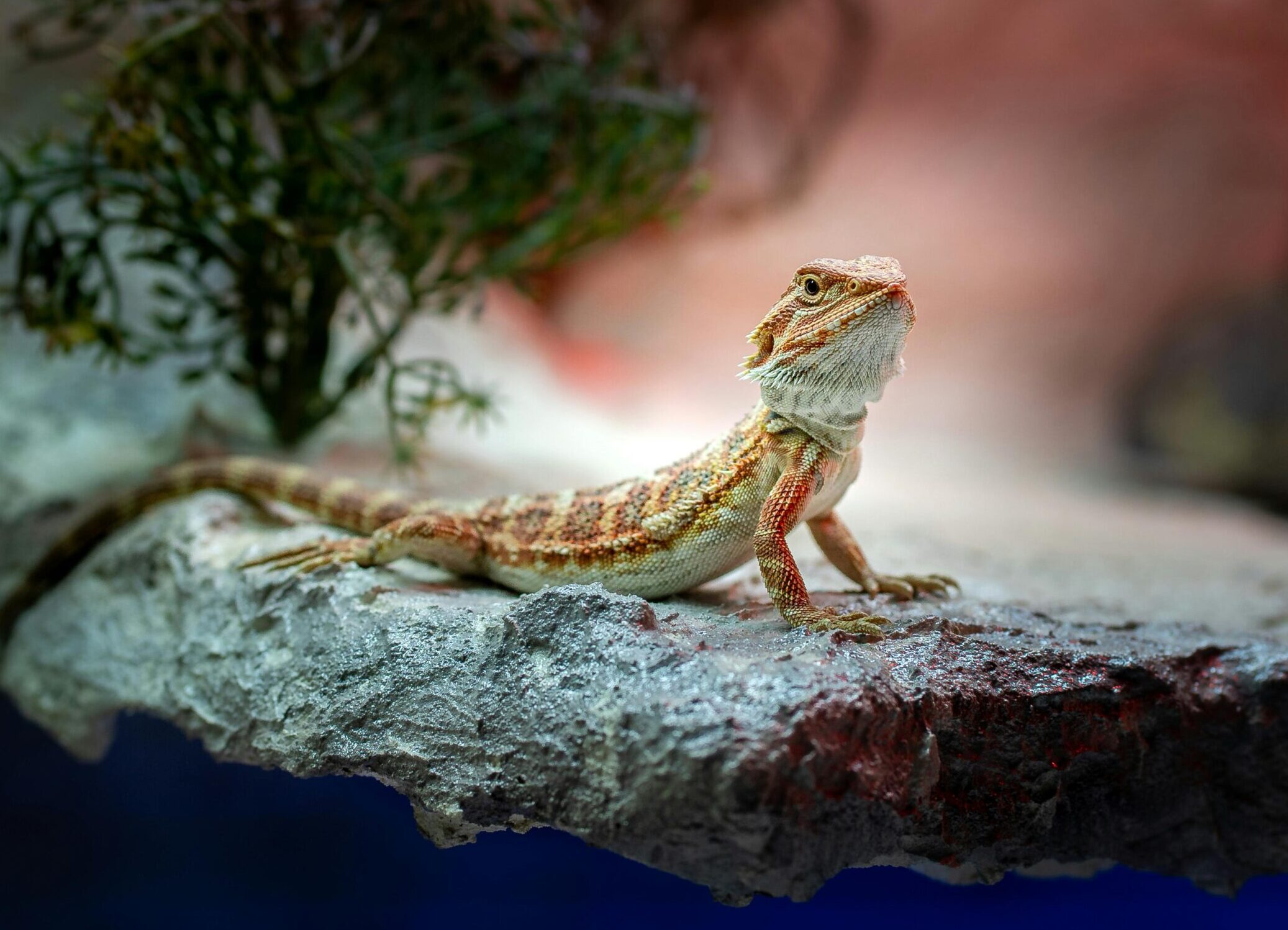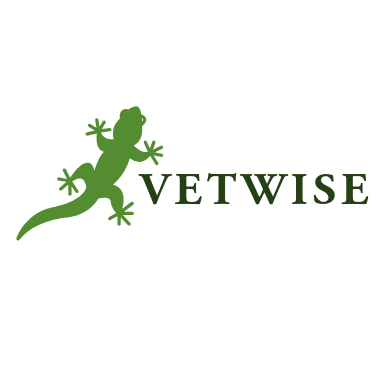Bearded dragons (Pogona vitticeps) are among the most popular pet reptiles in Europe, prized for their docile nature, expressive behaviors, and manageable care requirements. Native to the arid regions of central Australia, these hardy lizards have adapted well to captivity and can live 10–15 years with proper husbandry. As ectothermic animals, they rely on external heat sources to regulate their body temperature, making environmental setup a critical component of their health and well-being.
Enclosure and Environment
A single adult bearded dragon requires a minimum enclosure size of 120 x 60 x 60 cm (L x W x H), with glass or solid-sided vivariums preferred for temperature control and safety. The enclosure must provide a thermal gradient: a basking zone of 40–45°C at one end and a cooler zone of 28–30°C at the other, allowing the dragon to thermoregulate effectively. Nighttime temperatures can safely drop to 20–22°C. Heat should be provided via a ceramic heat emitter or basking bulb, never a heat rock, which can cause burns.
UVB lighting is essential for vitamin D3 synthesis and calcium metabolism. A 10–12% UVB tube should span two-thirds of the enclosure and be on for 12 hours daily, mimicking a natural day-night cycle. Natural, unfiltered sunlight (20–30 minutes, 2–3 times weekly in a secure, predator-proof enclosure) is beneficial but should not pass through glass or plastic, which blocks UVB rays. Humidity should be maintained between 30–50% to support healthy shedding and prevent respiratory issues.
Substrate and Enrichment
Safe substrates include; a 50/50 mix of organic topsoil and play sand for adults, or tile, paper towels, especially for juveniles, who are prone to impaction from loose materials like sand. Avoid calcium sand, walnut shells, reptile carpet (know for getting their nails stuck in the fibers) and other particulate substrates. Provide climbing branches, smooth rocks, and at least one hide on both the warm and cool sides to encourage natural behaviors and reduce stress.
Diet and Nutrition
Bearded dragons are omnivores with age-dependent dietary needs. Juveniles (under 4 months) should be fed 70% insects and 30% vegetables, with insects offered daily. Adults shift to 70% vegetables and 30% insects, fed 1–2 times weekly. Suitable insects include crickets, Dubia roaches, and locusts, all gut-loaded and appropriately sized (no wider than the space between the dragon’s eyes). Vegetables should be nutrient-dense and low in oxalates: collard greens, mustard greens, dandelion greens, bell peppers, zucchini, and butternut squash are excellent choices. Avoid spinach, beet greens, and avocado, which can interfere with calcium absorption or are toxic.
Dust food with a calcium + D3 supplement 2–3 times weekly and a multivitamin once every two weeks. Always remove uneaten insects after 15–20 minutes to prevent stress or biting. Fresh water should be offered daily, and many dragons benefit from 5–10 minute warm baths 1–2 times weekly for hydration and digestion.
Personality and Behavior
Bearded dragons are known for their calm, curious, and personable demeanor. They often recognize their caregivers, respond to routine, and enjoy gentle handling. Natural behaviors include arm waving (a submissive gesture), head bobbing (dominance or courtship), and basking. While they do not require social interaction with other dragons, they thrive on consistent human contact and environmental enrichment. They are solitary animals and should be housed alone, especially males, who may fight if cohabited.
Health and Veterinary Care
Annual veterinary exams are essential for early detection of disease. A baseline fecal exam should be performed upon acquisition and repeated annually to screen for parasites such as pinworms, which are common even in captive-bred dragons. Signs of a healthy dragon include clear eyes, intact skin, a strong appetite, alertness, and regular basking.
Common health issues include:
- Metabolic Bone Disease (MBD): Caused by calcium or UVB deficiency, leading to swollen limbs, a soft jaw, tremors, and fractures. Preventable with proper supplementation and lighting.
- Impaction: A life-threatening blockage often from ingesting substrate or large insects. Signs include lethargy, bloating, and lack of defecation. Requires immediate veterinary attention.
- Parasites: Both internal (protozoa, worms) and external (mites) can affect dragons. Diagnosed via fecal testing and treated with targeted medications.
Brumation, a natural, seasonal slowdown in activity, appetite, and metabolism, may occur during cooler months. Healthy adults can safely brumate, but juveniles and underweight dragons should not. Monitor weight and hydration, and consult a veterinarian before and during brumation.
Conclusion
With proper care, bearded dragons make rewarding, long-lived companions. Their care requires attention to detail in diet, lighting, and environment, but their friendly nature and engaging behaviour make them ideal for both novice and experienced reptile keepers. Regular veterinary check-ups, a balanced diet, and a well-maintained enclosure are the keys to a healthy, happy bearded dragon
Frequently Asked Questions
can bearded dragons recognise their owners?
Yes! many bearded dragons learn to recognise their keepers face voice and routine. They may respond by perking up, approaching the glass, or relaxing when handled. Each dragon has its own personality and comfort level with interaction.
How often should I clean my bearded dragon’s enclosure?
Spot clean daily (remove waste and uneaten food), and do a deep clean every 2–4 weeks. This means disinfecting surfaces, décor, and the substrate to prevent bacteria buildup and odors.
Do bearded dragons need baths?
Yes 5–10 minute warm baths once or twice weekly help with hydration, shedding, and digestion. Always supervise them, and make sure the water is shallow (no deeper than their shoulders).
What signs show that my bearded dragon is stressed?
Common signs include dark stress marks on the belly or chin, glass surfing (scratching at the tank walls), hiding excessively, or refusing food. Check lighting, temperature, and handling routines if stress persists.
Can bearded dragons eat fruit?
Yes, but only as an occasional treat, no more than 5–10% of their diet. Safe fruits include berries, apples, mango, and melon. Avoid citrus fruits, which can upset their stomach.


No responses yet